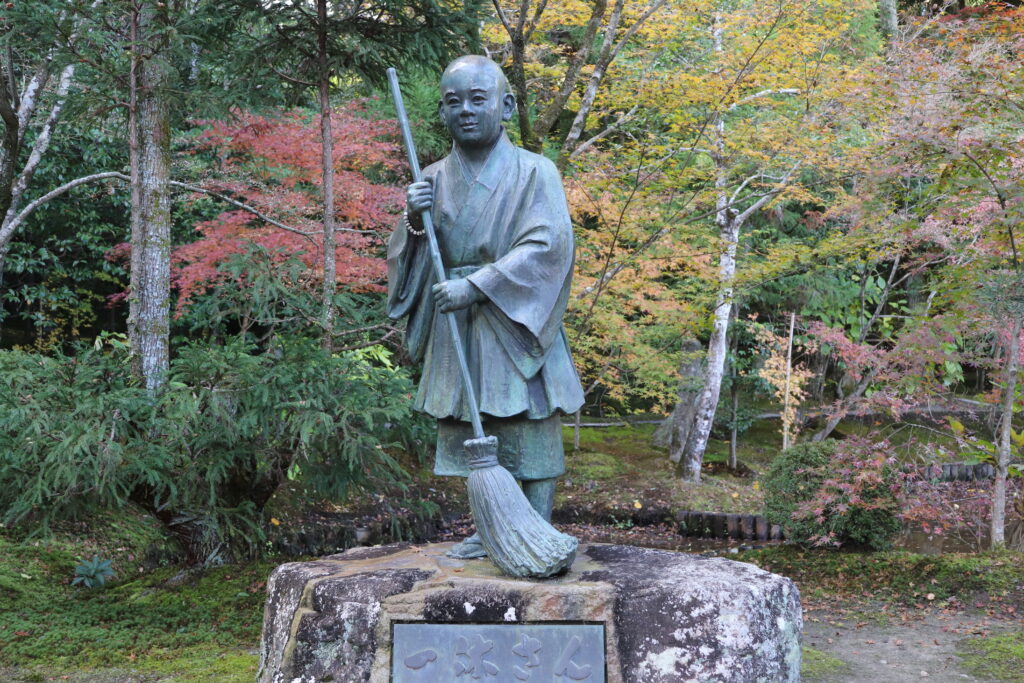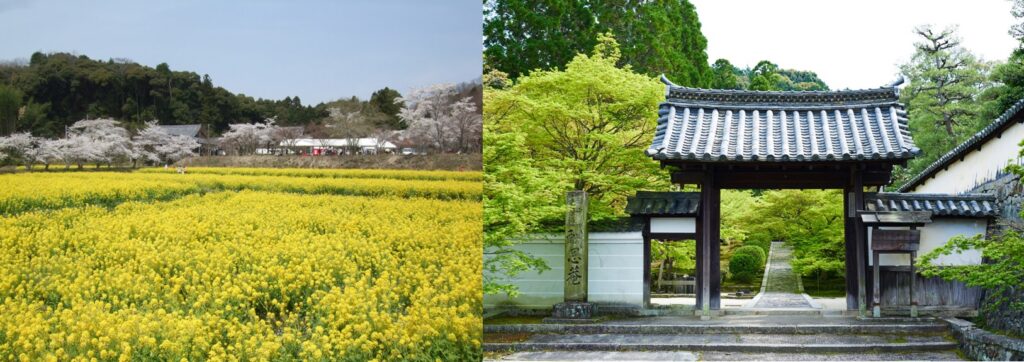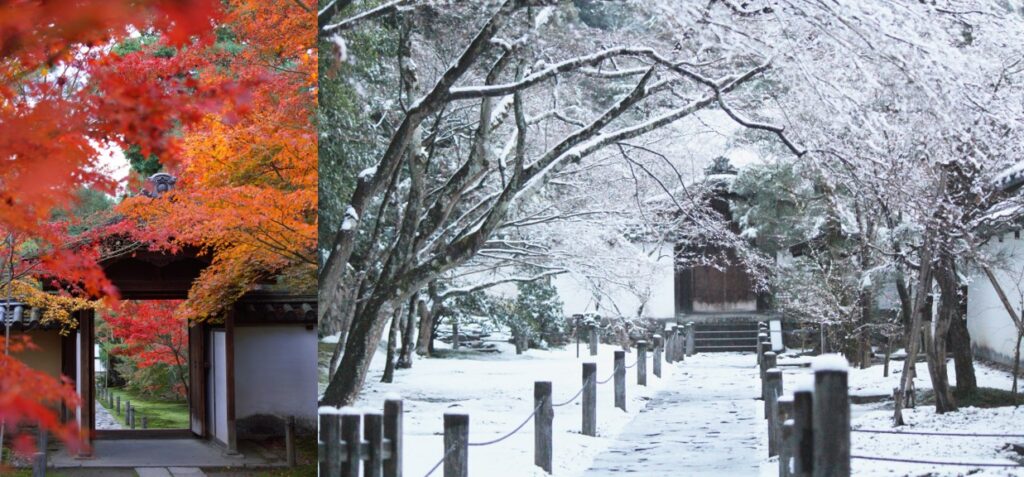A Guide to Wonderful Spots Beyond Ikkyuji Temple
1. Fugenji Fureai-no-Eki: Delightful Discoveries at the Local Farmers’ Marke
This charming farmers’ market offers fresh produce and other local specialties. From colorful fruits and vegetables to aromatic Japanese tea and tempting sweets, there’s something to delight everyone. You can also find light meals, small gifts, unique crafts, and more. Locals love it, and cyclists find it the perfect place to rest, grab a bite and enjoy the relaxed, cozy atmosphere. For travelers, it’s a good idea to visit it to get a glimpse into the region’s culture and the daily lives of people around here. (You’ll find a wider selection if you visit earlier in the day.)
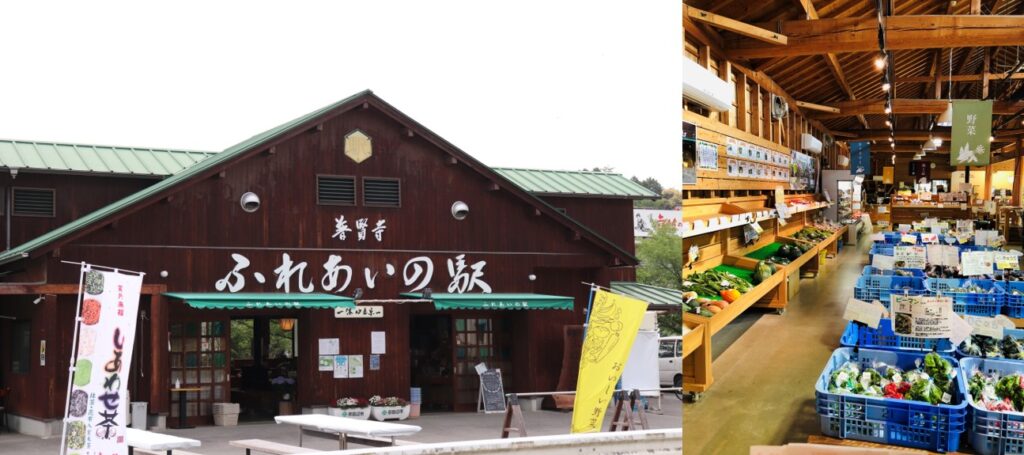
2. Omido Kannonji Temple: Journey Through Time
Next, visit Omido Kannonji Temple, which is believed to have been established under the order of Emperor Tenmu over 1,300 years ago. It enshrines a standing statue of Eleven-Headed Kannon Bodhisattva, which is one of the representative Buddha statues of the Nara Period (710-794). It is one of seven Eleven-Headed Kannon Bodhisattva statues designated as National Treasures.
When the temple was highly prosperous, it had 13 halls and more than 20 living quarters for monks, which made it known as the great temple of Tsutsuki. (Tsutsuki-no-Miya Palace once stood in this area, which served as the capital.) However, the temple has suffered from numerous fires, and most of the buildings were lost in the fire in 1437. Only the Omido (the main hall) was rebuilt later, and it survives to this day. (It was last rebuilt in 1953.)
This temple also offers beautiful scenery. In spring, yellow carpets of rapeseed blossoms spread out in front of the temple, which is a spectacular sight. You can also see beautiful cherry blossoms on the approach to the temple. In autumn, the main hall and garden are beautiful with fall foliage. A nighttime illumination event is held every year, in which visitors can enjoy the fall colors with the traditional Japanese ambiance.
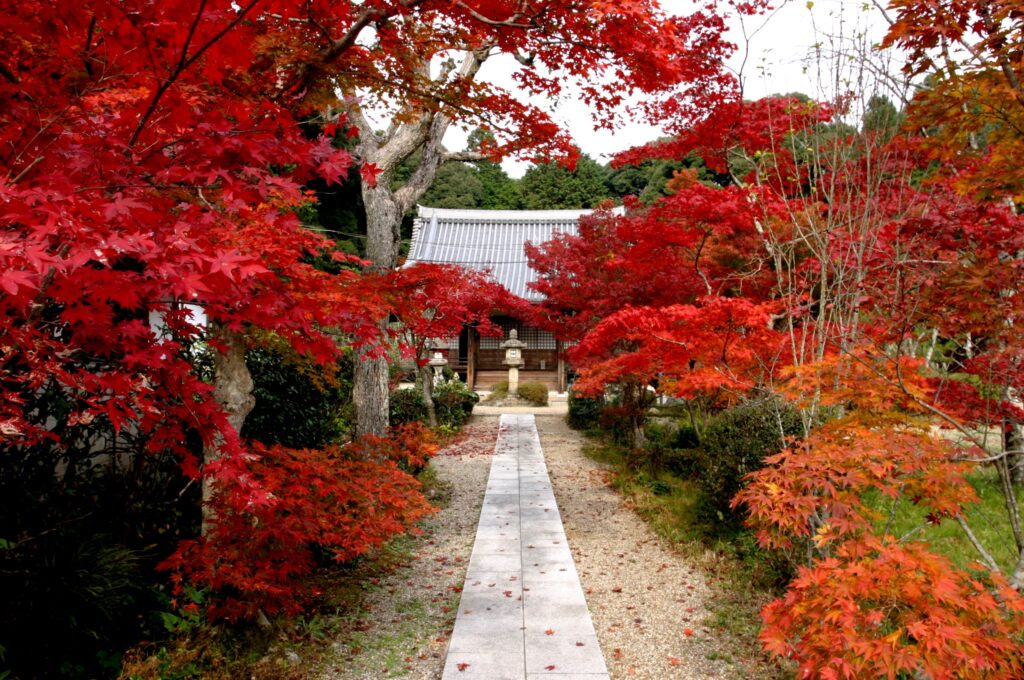
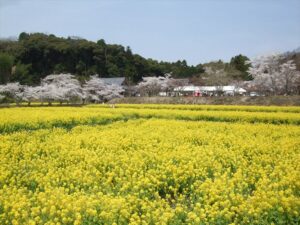
Omido Kannonji Temple
Omido Kannonji Temple is located in Kyotanabe City in the Kyoto Tea Country region. The temple is believed to have been founded over 1,300 years ago at the request of Emperor Tenmu. It has suffered fr …
3. Maiko Tea Boutique: Savor the Essence of Kyotanabe
As mentioned above, Kyotanabe, with its picturesque landscapes, is renowned for producing Japan’s finest gyokuro tea. Made through the hand-rolling method with meticulous care, this exquisite tea boasts a fascinating aroma, mellowness, and a rich, sweet flavor that has captivated tea connoisseurs worldwide. For a truly authentic experience, visit Maiko Tea Boutique. It’s directly managed by Maikonocha-Honpo (Maiko Tea Japan), which specializes in tea, especially gyokuro and Uji matcha. They offer a variety of Uji teas, perfect for gifts or everyday enjoyment. You can even purchase Yamashita Gyokuro, winner of the Ministry of Agriculture, Forestry and Fisheries Award. The cafe’s menu features a wide selection of tea-infused desserts, meals, and drinks, and you can relax and have a wonderful time there. Indulge in the enticing world of tea with treats, such as matcha parfaits, matcha cappuccino, and sweet zenzai soup with matcha and grilled mochi rice cake. Don’t forget to try their gyokuro soba (thin noodles), which reflect the region’s culinary heritage!
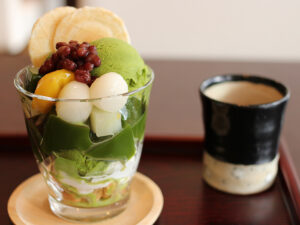
Maiko Tea Boutique
Maiko Tea Boutique, located in Kyotanabe City, is a popular cafe with a shop featuring tea. It’s directly managed by Maikonocha-Honpo (Maiko Tea Japan), which specializes in tea, particularly gyokuro …
